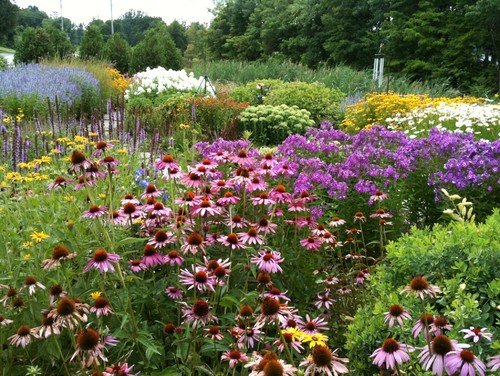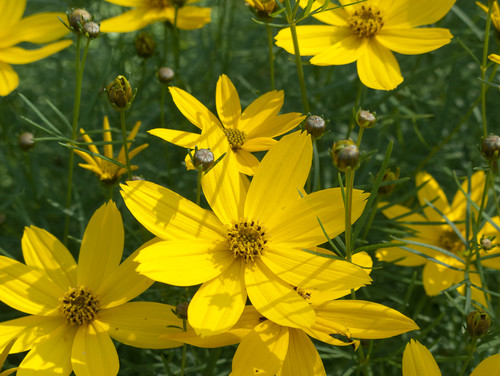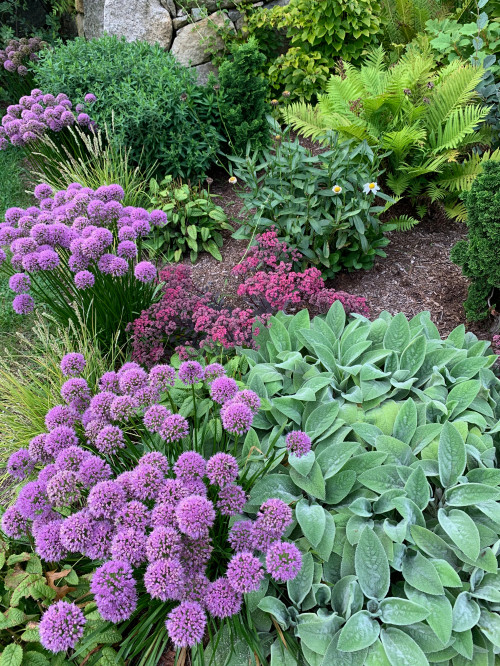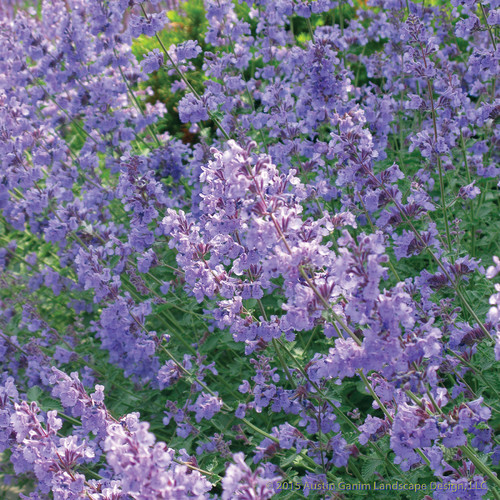1. Lavender
Lavender is an amazing Mediterranean shrub that not only looks great in your garden, but also gives off a fragrance that you and the local pollinators will love. It also likes very little water—to the point that many gardeners in humid or wet climates find themselves unable to grow it!
“Lavender is probably one of the easiest ornamental plants to grow, as all it needs is dry, well-drained, sandy soil and full sun exposure,” says Bryan McKenzie of Bumper Crop Times. “You can even grow it without fertilizing the soil. If you have a dry, sandy garden, you’re lucky to have an opportunity to grow this wonderful plant.”
2. Yarrow
Native to many regions of the West, these hardy little plants may start out small (they resemble miniature ferns) but pretty soon grow to yield dozens of parasol-shaped flowers that come in colors from red to white to shades of yellow and peach. Best of all? Yarrow doesn’t need to be babied to thrive.
“Yarrow is another great plant choice for the sunny edges of a fruit tree guild [mini ecosystem] or forest garden,” says Elizabeth Waddington of Horticulture Magazine. “It can cope with dry soil conditions and is great for bees and other pollinators, and also attracts predatory insects like lacewings and ladybugs to your garden, which help keep aphids and other pests at bay.”
3. Echinacea

If you love the look of daisies and the color pink, then planting a few rows of coneflowers (aka echinacea) should probably be your next gardening endeavor. These drought-tolerant beauties are a stunning addition to any garden and also a pollinator favorite.
“Wet soil simply kills this unique plant, but poor, rocky soil makes it fight for life and grow perfectly well,” says McKenzie. “You can grow echinacea in full or part sun, but it’s unadvisable to relocate the plant once established.”
4. Coreopsis

Like yellow blooms? Then you’re going to love this one. Also known by the very unflattering name tickseed, this sunny little plant will give your garden some serious summer glow, even if you forget to water it.
“Coreopsis are a great choice for attracting a range of wildlife but can be particularly beneficial for bringing butterflies to your garden,” says Waddington. “There are both annual and perennial varieties to consider. Annual types will often self-seed readily and can be a good choice as a companion plant in an annual vegetable garden.”
5. Golden marguerite daisy

“This perennial plant with sunny yellow flowers reminds me of serene days in the countryside,” says McKenzie.
It thrives in USDA hardiness zones 3-7 and in heavy or loamy moist soil.
“Despite its demand for regular watering, it’s also known as a drought-tolerant plant that can grow pretty well in poor rocky or sandy soils as well,” McKenzie says.
6. Allium

Not only are these fluffy pink blooms pretty, but you can actually cook with certain varieties, too!
Allium, also called ornamental onion, has a slightly sweet onion flavor, and the tiny pink buds look just as good in your garden as they will on a cream cheese bagel.
“This ornamental plant with large, ball-shaped purple flowers can be a great addition to a long-grass lawn,” says McKenzie. “All it needs is good drainage and full sun.
“However, the edible allium species can be highly vulnerable to pests, so you should consider inedible species if all you want is unique flowers,” he adds.
7. Catmint

This aromatic herb will grow just about anywhere—and won’t have any problems in your dry garden. It also boasts a spray of purple flowers (which can be deadheaded for multiple blooms) and is deer-resistant.
“Great alongside Russian sage, and other sun-loving plants which like free-draining conditions mentioned above, catmint is another great perennial for a dry garden,” says Waddington. “You can even eat the leaves raw in salads for a mintlike flavor, or use them to make tea. Plant it near other plants or crops to deter a range of insect pests, such as flea beetles.”

Recent Comments